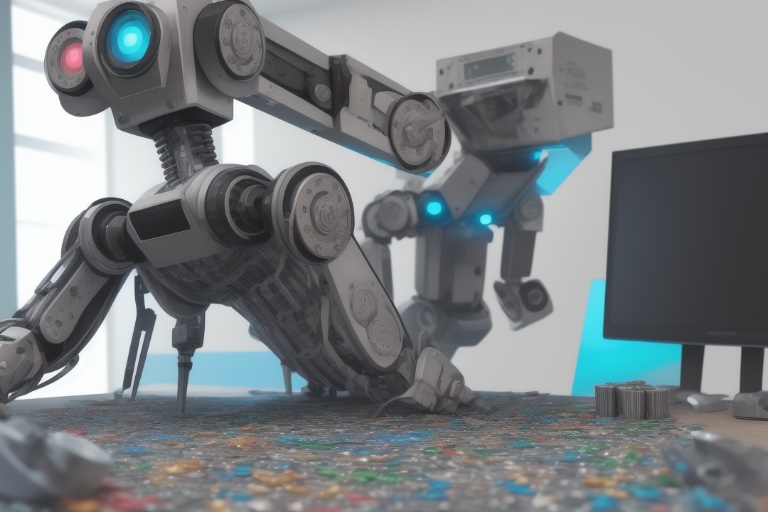The role of designers has always been to craft experiences that are both useful and aesthetic, but the rise of artificial intelligence (AI) demands a new breed of designer—one who can navigate the complex and dynamic interactions between humans and machines. Traditional design has often been a static endeavor, focusing on creating a fixed user experience. However, in the realm of AI, design is far from static; it’s about fostering an evolving relationship that grows smarter and more intuitive with each interaction.
The role of designers has always been to craft experiences that are both useful and aesthetic, but the rise of artificial intelligence (AI) demands a new breed of designer—one who can navigate the complex and dynamic interactions between humans and machines. Traditional design has often been a static endeavor, focusing on creating a fixed user experience. However, in the realm of AI, design is far from static; it’s about fostering an evolving relationship that grows smarter and more intuitive with each interaction.
Understanding AI Design
To excel in AI design, it's critical for designers to have a deep understanding of AI's intricacies. Unlike traditional machines, AI systems have the ability to learn and adapt over time. They engage in a co-learning process with humans, digesting feedback, and refining their behaviors. This dynamic necessitates that designers rethink interaction models, moving from linear, predictable flows to ones that can handle the mutable nature of AI-driven systems.
One of the distinguishing characteristics of AI is its reliance on data. For AI designers, data is not just a directive that tells the machine what to do—it is the very fabric that AI uses to develop and adjust its behaviors. Effective AI design requires a focus on the entire data lifecycle, from initial data collection to the final output and how the system generates its responses. The challenge lies in crafting these interactions in a way that is transparent and controllable for the user.
Traditional vs. AI Design: An Example
To illustrate the stark contrast between traditional and AI-infused design, consider the difference between a record player and a music streaming service like Spotify. The record player will play the same album in the same order every time, while Spotify employs machine learning algorithms to tailor its recommendations and create personalized playlists for the user. Each interaction with Spotify refines its understanding of user preferences, offering a progressively customized experience. AI designers must ensure that users are provided with insights into the decision-making process of these intelligent systems and that they have agency over their interactions with the machine.
Even as AI tech introduces a dynamic element to design, foundational principles such as simplicity and consistency remain important. Modern AI designers must, therefore, balance these time-honored design principles with the needs of a two-way informational exchange between users and AI systems.
The AI Designer's Skill Set
AI design is a specialized field, requiring a hybrid set of skills that blend technical, analytical, and ethical considerations:
Technical Understanding: Proficiency in the technical foundations of AI, including familiarization with machine learning algorithms, data analysis, and AI-centric programming languages, is indispensable for a designer in this field.
Data Literacy: The nuances of data are central to AI, and its interpretation is a craft in itself. Therefore, AI designers should be adept in data analysis and visualization, proficient in translating complex datasets into comprehensible and actionable insights.
Problem-Solving: Given the complexity of AI systems, designers must possess strong problem-solving skills. They should approach problems with critical thinking and creativity, finding innovative solutions that address both technical and user-centered challenges.
Ethical Design: Ethics is paramount in AI design. As AI systems increasingly influence our lives, designers should put the safety and well-being of users at the forefront. This includes grappling with the moral implications of their work and striving to create responsible and trustworthy AI systems.
Collaboration: AI design doesn't happen in a vacuum; it requires the combined efforts of an interdisciplinary team. Designers should have excellent communication skills and the ability to work effectively with data scientists, engineers, and various other stakeholders.
The Evolving Role in AI Development
The role of an AI designer extends far beyond what appears on a user interface. It encapsulates the entire design process—from defining problems to iterating on solutions. As AI continues to make strides forward, designers will need to evolve alongside, understanding the weight of their responsibility and the breadth of their influence.
AI designers are not only shaping the immediate experiences users have with technology but are also laying the groundwork for the future trajectory of AI systems. This includes propagating discussions about ethical AI and ensuring that as machines become more ingrained in decision-making processes, they do so with the utmost integrity and respect for user rights.
In conclusion, Relinquish the notion that AI design is akin to traditional design paradigms. The inclusion of data as a fundamental building block, the necessity for ongoing learning and adaptation, and the imperative for transparency and ethical considerations make AI design a unique and ever-evolving discipline.
Designers venturing into this domain are not only becoming custodians of creativity but guardians of a future where humans and machines collaborate seamlessly and ethically. As our journey into AI and machine learning continues, those at the frontier of design will play a pivotal role in scripting a narrative that is as humanistic as it is innovative, ensuring AI's role in society is both functional and ethical.
Stay tuned for future articles where we'll delve deeper into the world of programming, AI, and machine learning, offering insights and guidance on how to navigate these transformative technologies.
Information for this article was gathered from the following source.


